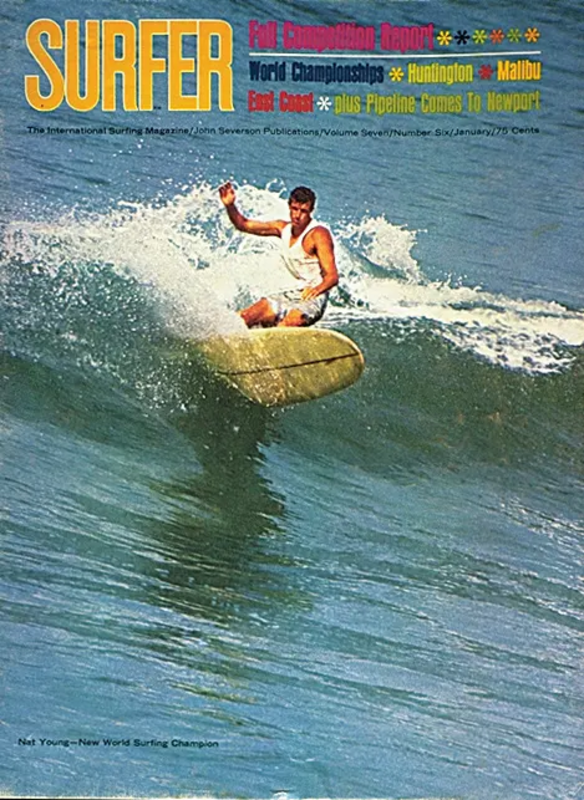The 1966 World Surfing Championships in San Diego was a watershed moment in surfing. Organized by an international cadre of visionary contest directors, led by Peruvian maestro Eduardo Arena, the event was attended by more than ten thousand spectators, showcasing the budding sport to the nation in real time. Held in the city’s coastal enclave of Ocean Beach, it was the first world contest ever hosted by the United States and helped put San Diego on the map as an attractive tourist city in America.
Under a sliver of a new moon, with the great Duke Kahanamoku himself presiding, from September 29 to October 4, the world witnessed the first glimpse of surfing’s seismic shift in performance and design.
Although the competitive field was full of the top surfers from seven nations, the matchup between California’s David Nuuhiwa and Australia’s Nat Young was considered the ultimate test of both skill and style. Nuuhiwa was generally acknowledged as the best nose-rider in the world, and a supreme stylist of the smooth, elegant approach to wave-riding. Nat Young was at the opposite end of the spectrum, explosive and intense.
It was a study in contrasts: horizontal flow versus vertical slash. the apex of conventional performance was dueling with the embryonic but avant-guard power approach.
Inspired by Santa Barbara native kneeboarder George Greenough’s radical vertical speed carves in the point break headlands of Alexander, Lennox , and Byron Bay, the Aussie elite crew were both astonished and then determined to find surfboard designs to achieve his groundbreaking performances.

The Australians had already begun to attack waves differently. A teenage Wayne Lynch, Nat Young, and Ted Spencer, armed solely with longboard templates, were experimenting with thinner, shorter, sleeker surfboards and different bottom configurations to mount vertical assaults that were ahead of their time. But they needed proof on a international stage to lend proof to their foam and resin pudding. The ’66 World Surfing Championships was the perfect venue.
Young had brought a new surfboard with him, guided by Greenough and Bob McTavish the leading Australian shaper of the era who would soon become a massively influential figure in the design of the shortboard. Christened Magic Sam, Young’s board was a slightly shorter, more maneuverable shape which he boldly claimed to be a secret weapon.
Although the two never faced off against one another man-on-man, the result was just as significant: despite an astonishing ten-second nose ride early in the event by Nuuhiwa, Young’s new techniques throughout the contest convincingly persuaded the judges to crown him the undisputed champion.
The event became the defining moment when stylized, poised precision was replaced by pivoting, punchy power maneuvers — relying on the tail of the board instead of the nose to accent the performance.
This dominating exhibition ushered in the first revolution of performance and surfboard design since the 1950s advent of the fiberglass and foam board. It brought Australia onto the world stage as a top surf nation and San Diego as a new tourist destination. After the 1966 Championships nothing in the world of surfboards would ever be quite the same.
Related: The Genius Of George Greenough According To Nat Young

